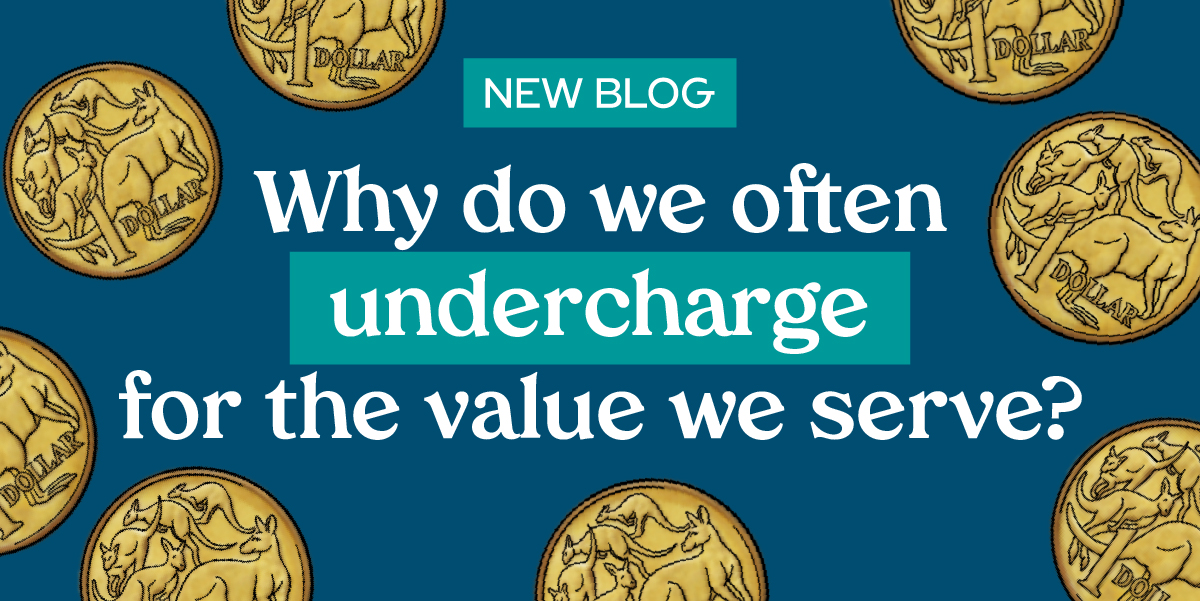A 3.9 minute read...
I’m constantly impressed by the innovative service businesses that people come up with it. While yes, some are a bit…erm….niche (goat rental anyone?), the hangover bus is downright genius.
I’m constantly impressed by the innovative service businesses that people come up with it. While yes, some are a bit…erm….niche (goat rental anyone?), the hangover bus is downright genius.
These clever entrepreneurs have spotted a widespread problem and come up with a clever way to make money from it.
If you’re one of these nifty business owners, congratulations! This could be the beginning of something sensational.
However, as a service provider, you’ve probably spent a lot of brain cells trying to figure how to price your services. It’s not as simple as plucking a number from thin air and hoping people will pay it. There are still overheads to be covered, and you (obviously) want to make as much profit as you can.
Anyone who’s familiar with my work knows that I share more than one recipe to structure and determine your rates. The value you’re providing plays a huge part, but you can read more about that here.
When you’re really stuck and there are so many variables to account for, it might be time to make a sandwich.
If you’re anything like me, you’re all in as far as sandwiches are concerned. A pesto chicken with avocado and cos on sourdough is enough to get you drooling but costs more time and money than a simple peanut butter.
While you’d love to have the chicken for every meal of every day, there are times where all you’ve got in the house is plain white bread, peanut butter, mayo, and a few eggs. When you’re not a position to make the gourmet sourdough, a devilled egg is still better than plain peanut butter.
Sometimes when you’re pricing the solutions you offer, the best way to do that is to sandwich the solution.
This is where you create differently tiered service packages that include different deliverables and are not all the same price.
You have a minimum amount you’d ideally like each client to spend, but you don’t want to offer it as an “it’s this or nothing” approach. Therefore, you create three different package options and have the middle one as the minimum amount you’d like them to spend.
In this scenario, that middle package is the devilled egg sandwich. It offers a lot more than the peanut butter (the cheapest package), but not as much as the pesto chicken and avo.
Now, to really sway the client to choose at least the middle tier, you need to be clever with what you include in each package and how much you charge.
Say you’re a graphic designer. Your middle package is $1500 and includes a logo, colour palette, font selection and email signature. Your top tier package is $2500 and includes everything the middle package does, as well as a business card design, letterhead, 10 social media tiles and a bunch of other little bits and pieces.
Ideally, you want the customer to spend at least $1500 or more.
One of the best ways to persuade them to do this is by being clever with the cheapest package and creating a choice that isn’t even a choice.
The bottom tier offering needs to include significantly less deliverables for only slightly less money, This could be a ‘logo and font selection’ package for $1350. That means that by opting for the middle package (the one you want them to choose), they’re getting a colour palette and email signature for only $150.
Sandwiching the solution like this makes the middle package a no-brainer for the client.
Look, I wish I could tell you that it always works, and they always spend what you want them to.
There will always be those who are rigid and, despite the obvious, are set on buying the bare minimum. It may be just enough to satisfy their hunger, even though the devilled egg or the pesto chicken would taste better and provide more nutritional value.
However, in my many years of experience, sandwiching the solution this way usually sways them to spend the minimum and really understand the value you’re providing.
It’s important to always remember that in business, when we need to make things cheaper, we do it only by reducing the deliverables. Never ever just reduce the price without reducing what’s included.







